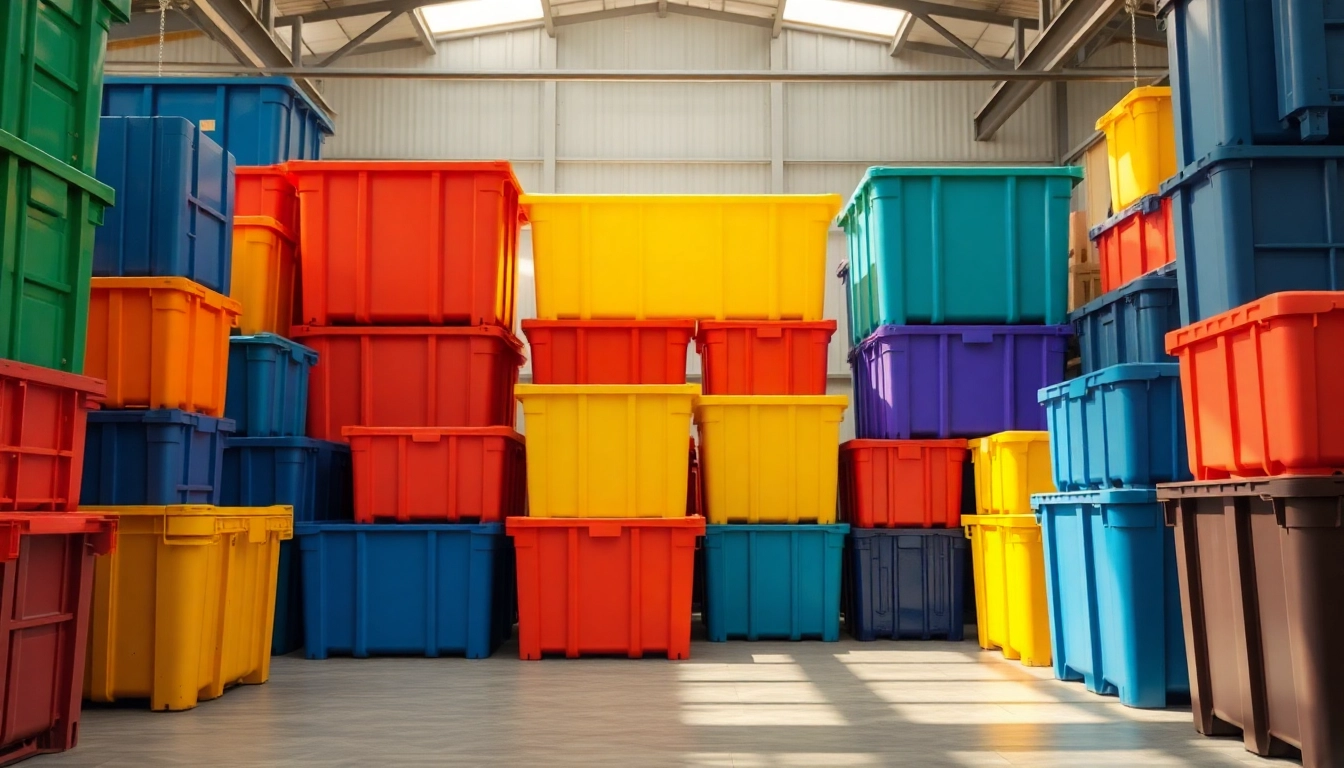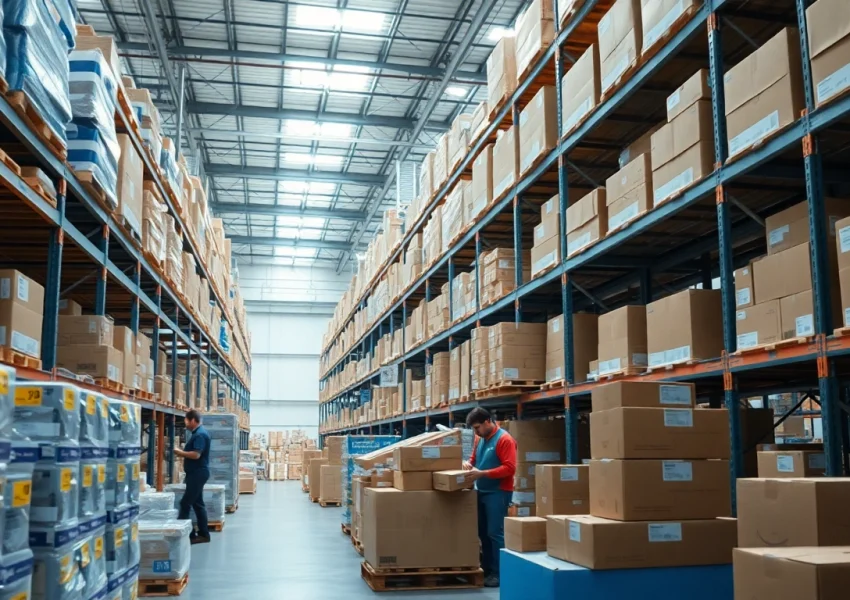The Basics of Polyurethane Containers
What are Polyurethane Containers?
Polyurethane containers are specialized storage devices made from polyurethane, a versatile and durable polymer that exhibits a wide range of mechanical, thermal, and chemical properties. These containers are designed for various applications across several industries due to their ability to withstand extreme conditions while protecting their contents effectively. Notably, polyurethane containers are essential in the cold chain sector, where temperature control is critical to maintain product integrity during transportation and storage.
Common forms of polyurethane containers include insulated shipping containers, food storage containers, and industrial storage bins. Their adaptability extends to temperature-sensitive items, pharmaceuticals, and perishable goods, showcasing the profound significance of polyurethane containers in modern logistics and storage solutions.
Key Characteristics and Features
Polyurethane containers are distinguished by several notable characteristics that enhance their performance and usability:
- Thermal Insulation: Polyurethane’s inherent insulation properties help maintain specific temperatures, making them ideal for transporting sensitive materials.
- Durability: These containers are resistant to impact, abrasion, and other physical stresses, ensuring long-term usability.
- Chemical Resistance: Polyurethane can withstand various chemicals without degrading, making it suitable for industrial applications.
- Lightweight: Compared to alternatives like metal or glass, polyurethane containers offer significant weight savings, reducing shipping costs.
- Versatility: They can be molded into various shapes and sizes, accommodating diverse storage needs.
Common Applications Across Industries
Polyurethane containers are utilized across numerous industries for various applications:
- Food and Beverage: Used for storing perishable goods, these containers help maintain the freshness and quality of items.
- Pharmaceutical: Critical in the storage and transport of medical supplies and drugs, ensuring they remain within required temperature ranges.
- Chemicals: They provide safe storage solutions for various industrial chemicals, preventing leaks and contamination.
- Cold Chain Logistics: Essential for transporting temperature-sensitive products, such as vaccines and perishable foods, by controlling ambient conditions.
Advantages of Choosing Polyurethane Containers
Durability and Resistance to Elements
One of the most significant advantages of polyurethane containers is their exceptional durability. They demonstrate remarkable resistance to environmental conditions, including moisture, temperature fluctuations, and UV light exposure. This resistance ensures that they maintain their structural integrity over time, significantly reducing the risk of damage that can occur with other materials.
For example, in cold chain logistics, polyurethane containers can endure sub-zero temperatures without cracking or losing their insulative properties, making them superior to traditional foam or cardboard packing materials.
Cost Efficiency and Longevity
Investing in polyurethane containers can ultimately save costs in the long run. Their durability translates to less frequent replacements compared to plastic or paper-based containers that may deteriorate more quickly. Moreover, their superior insulation properties can lead to lower energy costs, as businesses do not need to work as hard to maintain temperature control.
When analyzing total cost of ownership, companies can find that the initial Higher purchase price of polyurethane containers is justified by their longevity and performance, resulting in a lower overall expenditure over time.
Compliance with Industry Standards
Another critical advantage is that polyurethane containers often meet or exceed industry-specific regulations and standards. For instance, in the food and pharmaceutical industries, ensuring compliance with health and safety regulations is paramount. Polyurethane containers are typically made from FDA-approved materials that are free of harmful chemicals, ensuring safety for food and drug storage.
By utilizing compliant materials, businesses mitigate the risks associated with regulatory penalties and enhance their reputation among consumers who prioritize safety and quality.
Best Practices for Using Polyurethane Containers
Optimal Storage Conditions
To maximize the performance of polyurethane containers, it is essential to store them correctly. Ideal storage conditions depend on the material’s properties and applications:
- Store in a climate-controlled environment to maintain integrity, particularly for temperature-sensitive goods.
- Avoid exposure to excessive UV light, which can degrade some polyurethane materials over time.
- Regularly inspect containers for signs of wear or damage, especially after prolonged use or exposure to extreme environments.
Handling and Maintenance Guidelines
Proper handling and maintenance can further enhance the longevity of polyurethane containers:
- Training: Ensure staff is trained on how to handle these containers delicately to prevent impact damage during transport and storage.
- Cleaning: Use appropriate cleaning agents that are non-corrosive to maintain the integrity of the container material.
- Inspections: Conduct regular inspections post-use to identify any defects or weaknesses, addressing issues before they escalate into more serious problems.
Understanding Safety and Compliance
For organizations dealing with food or pharmaceuticals, understanding safety and compliance regulations tied to the use of polyurethane containers is crucial. Regular training on regulations and industry standards helps guarantee that best practices are maintained, lessening the risks associated with health violations and product tampering.
Documentation of compliance and maintenance records can also be beneficial during audits and inspections, reassuring stakeholders about the commitment to quality and safety.
Comparing Polyurethane with Other Container Materials
Polyethylene vs. Polyurethane Containers
When considering container materials, polyurethane and polyethylene are two of the leading options available, each with unique characteristics:
- Polyethylene: Generally more affordable, polyethylene containers are lightweight and commonly used for various industrial applications, but they lack the thermal insulation properties of polyurethane. They are more suited for general bulk storage rather than sensitive products.
- Polyurethane: While typically more expensive, polyurethane offers superior thermal performance, durability, and versatility, making it a better choice for temperature-sensitive goods and industries requiring stringent compliance.
Advantages Over Traditional Materials
Polyurethane containers outshine many traditional materials (like cardboard or metal) in several key areas:
- Better Insulation: They provide superior thermal control, essential for storing and shipping temperature-sensitive materials.
- Increased Durability: Unlike cardboard, polyurethane does not easily degrade, ensuring contents remain safe and secure.
- Lightweight Design: Polyurethane’s strength-to-weight ratio allows for substantive shipping savings due to lower freight costs.
When to Choose Polyurethane Containers
Organizations should consider using polyurethane containers in scenarios including:
- Transporting pharmaceuticals that need strict temperature control.
- Storing food products requiring compliance with health regulations.
- Industries requiring durable, leak-proof, and chemically resistant containers.
Future Trends in Polyurethane Container Usage
Innovations in Design and Functionality
The utilization of polyurethane containers is likely to see increased innovations, particularly regarding design and functionality. Manufacturers are investing in advanced materials that enhance insulation efficiency, customization options for unique shapes, and integrated features that provide real-time tracking of conditions within the container.
For example, smart containers embedded with temperature sensors will provide instant alerts for breaches in required temperature ranges, enhancing safety and compliance measures.
Market Insights and Growth Opportunities
The polyurethane container market is experiencing notable growth driven by factors like increasing demand for temperature-controlled logistics, expansion in the pharmaceutical and food sectors, and continued emphasis on sustainability. Businesses can leverage this market growth by adopting innovative practices and technologies that streamline operations and reduce costs.
Understanding market trends, such as the rising demand for biodegradable materials, will position organizations to adapt and capitalize on changing consumer preferences.
Environmental Considerations in Container Production
As the world shifts towards a more sustainable future, there is an increasing demand for environmentally friendly manufacturing practices within the polyurethane container industry. Companies are exploring options such as using renewable resources in production and implementing recycling programs for used containers. This shift not only benefits the environment but can also enhance a brand’s appeal to eco-conscious consumers.
Future legislation may also drive further innovation in this area, making it imperative for organizations to stay ahead of regulations related to sustainability.




